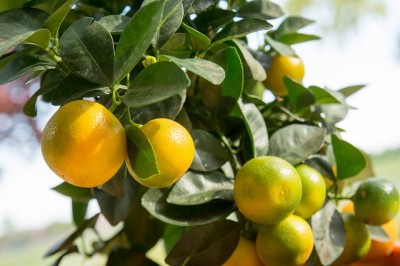Background
Calamansi is indigenous to the Philippines and one of the important and widely cultivated crops throughout the country. On a regional level, the top two growing areas in the country are MIMAROPA at 6,872 ha and Central Luzon (where Nueva Ecija is located) at 1,734 ha. In MIMAROPA, the widest production areas are found in Victoria, Oriental Mindoro. Buyers prefer the calamansi of Oriental Mindoro because it has a thicker rind, stronger taste, longer shelf-life, and resists any weight loss (DA-PRDP Value Chain Analysis for Calamansi, 2012).
Recognizing the enormous market potential of the fruit, community-based small–scale processing centers are now being promoted, developed and supported by various government and non-government organizations. The establishment of processing centers also hopes to address the price dumping of the fruit during peak season.
The capacity of the food industry to gain access to competitive market is greatly determined by its ability to meet consumers' standard of product quality which include among others, food safety standards. It must be noted that the production of fresh and processed calamansi involves different activities from farming, harvesting, postharvest handling and processing. Accordingly, there is good reason to address the many facets of calamansi from "farm to plate" to widen income opportunities and generate much needed employment for the residents in the calamansi growing communities.
Cognizant of the potentials of the calamansi and the need to revitalize the industry, the evolving partnership among SEARCA, Tokyo NODAI, UPLB, LGU Provincial and Municipal levels and MinSCAT intends to harness the strengths of the partner institutions in addressing gaps along the calamansi value chain through technology utilization/commercialization and marketing.
Objectives
In general, the project intends to address the technical and market constraints that confront the calamansi industry along the value chain and bring together the strengths of research institutions, in collaboration with the local government units and other calamansi stakeholders in Oriental Mindoro.
Specifically, the proposed project has the following objectives:
- Improve calamansi production and fruit quality by utilizing proven technologies and practices in integrated pest management, fertilization, off-season fruiting, and post-harvest handling practices;
- Support the commercialization of calamansi-based products through value chain analysis of processed products, market study, and product and post-harvest handling practices, calamansi processing, and entrepreneurship; and
- Promote faculty and student exchange for R&D and technology promotion/transfer undertakings.
Components
The Project has four major components as follows:
Component 1: Expanded Calamansi Value Chain Analysis and Market Study
- Value chain study of calamansi-based processed products of Oriental Mindoro
- Market study of calamansi
Component 2: Improving Calamansi Production, Postharvest Handling, and Processing
- Promotion and dissemination of integrated pest management (IPM) strategies
- Biological control of rind borer, pysllids and aphids on citrus
- Disease Indexing for the production of tolerant variety and clean planting materials
- Improving postharvest handling practices and pilot testing of postharvest technologies
- Hot Water Treatment (HWT)
- Modified atmosphere packaging (MAP)
- Improving existing production management for increased yield and off-season fruiting
- Soil nutrient/water management, pruning, and other off-season fruiting techniques
Component 3: Enhancing Calamansi Products and Enterprise Development in Oriental Mindoro
- Determine the suitability of various stages of maturity of fresh calamansi to different processed product forms
- Improvement of existing products
- Enterprise development assistance
Component 4: Capacity Building and Faculty/Researchers Exchange
- Faculty/researchers exchange
- Training program to address gaps in the value chain
- Attendance to relevant conferences (local and international)
Expected Outputs and Outcomes
The Project is expected to produce the following outcomes:
- Areas of improvement in the calamansi value chain identified and addressed
- Market for calamansi products analyzed and identified
- Productivity and fruit quality improved (Increased production by 20% due to improved pest and disease management and off-season production; reduced postharvest losses by 25% and shelf life of fruits extended)
- Calamansi-based processed products and enterprise enhanced
- Trainings and capacity building of various stakeholders conducted
- Knowledge resources produced and disseminated
